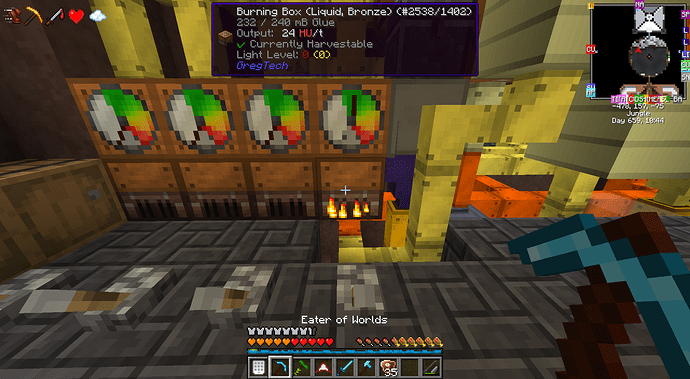Until now, the only way to obtain rubber in GT6 is through resin/sap bags, but this cannot be automated. If you want to obtain a large amount of rubber to make insulated cables, you need to plant a large rubber forest, and you have to take out the viscous resin from time to time to prevent it from being filled. This method obviously does not conform to the lategame, so the process of chemical synthesis of rubber is very necessary.
The process of polymerization of isoprene itself is similar to that of polymerization of ethylene / propylene. They also use similar catalysts. However, after rubber polymerization, it will still maintain the latex state and still need a coagulator to solidify (making the large coagulator really meaningful). Now the main problem is how to produce monomer isoprene.
At present, there are several methods to produce isoprene in reality:
-
Fractionation of cracked products. Now a major source of isoprene is the by-product of steam cracking naphtha to prepare ethylene. First, C5 fraction is distilled from the cracked products. Most of C5 fraction (about 15-20%) is isoprene, but this method is obviously not suitable for the game, because a pile of fuel oil is directly distilled from gt6 oil without naphtha…
-
Propylene dimerization method: this method is divided into three steps. In the first step, propylene dimerizes into 2-methyl-1-pentene under the catalysis of tripropyl aluminum. 2-methyl-1-pentene forms 2-methyl-2-pentene with the catalyst (I can’t find the composition of the catalyst) at high temperature, and the latter demethylates to form isoprene, which is used in gt5u (two units of propylene synthesize one unit of isoprene and methane in a chemical reactor with programmed circuit=2) In addition, another method in GT5U: direct synthesis of isoprene from ethylene and propylene. I haven’t found relevant papers, but their processes may be similar. How to simulate this process in the game is also a problem. You can’t directly stir ethylene + propylene into isoprene in a mixer, at least add some catalyst or something…
-
Isopentane / isopentene dehydrogenation method: as the name suggests, this method is to dehydrogenate isopentane / isopentene to isoprene under high temperature catalysis. This method has many side reactions and is not suitable for the game (obviously, isopentane / isopentene or similar things cannot be obtained in the game)
-
Isobutene-formaldehyde method: it is divided into two steps method and one step method. In the two steps method, isobutene and formaldehyde undergo Prins reaction under acidic catalyst to produce 4,4-dimethyl-1,3-dioxane (DMD), and then DMD is cracked to produce isoprene. In one step method, isobutene and formaldehyde are directly reacted to isoprene at 200-300°C in the gas phase and catalyst (I also did not find the catalyst component). These two methods are also not suitable in the game…
-
Acetylene-acetone method: under pressure, acetone and acetylene react in solvent liquid ammonia to produce 2-methyl-3-butyne-2-alcohol, then hydrogenation to produce 2-methyl-3-butene-2-alcohol, and finally dehydrate with aluminum oxide to prepare isoprene.



